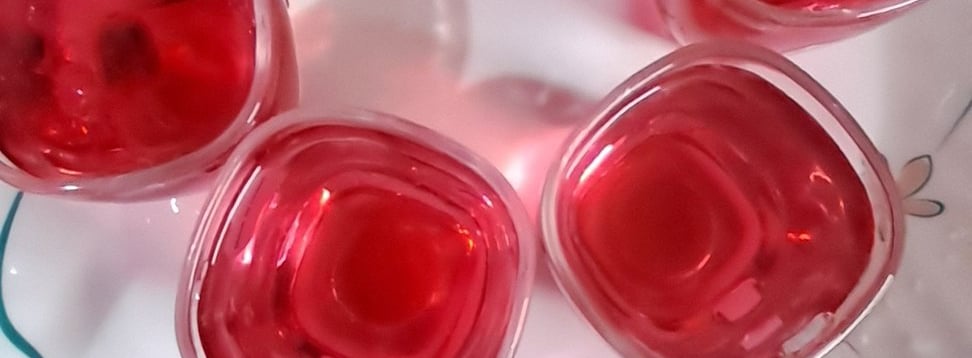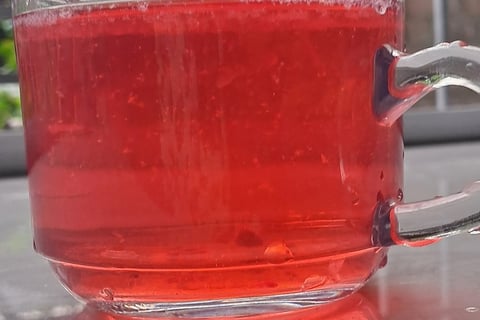Sip Red, Live Green: The Science & Wellness Behind Hibiscus Tea
Discover the wellness power of hibiscus tea. From supporting heart health and balancing hormones to boosting immunity and digestion, learn why this tangy red tea is a must-have in your daily routine.
Dr. B.N. Sultana – Founder, Harvest & Heal Food Security Researcher | Gut Health & Fasting Mentor
6/27/20253 min read
Sip Red, Live Green: My Daily Ritual with Hibiscus Tea
Every morning, I brew a vibrant cup of hibiscus tea, letting its deep red hue fill my cup—and my mood—with joy. What began as a curiosity has blossomed into a nourishing ritual. Here’s why I’ve made this tangy tea a daily habit, and how it could benefit you too.
---
🍵 What Is Hibiscus Tea?
Hibiscus tea is a caffeine‑free infusion made from the dried calyces of Hibiscus sabdariffa. With its tart flavor reminiscent of cranberries and rich in vitamin C and antioxidants, this tea is a global staple—known as karkadé, zobo, and agua de Jamaica across different regions .
---
❤️ 1. It Helps My Blood Pressure Naturally
After adopting hibiscus as a daily ritual, I noticed a gentle dip in my morning readings. This isn’t just personal—it’s backed by solid science. A meta-analysis of 13 clinical trials involving over 1,200 participants found that hibiscus lowered systolic blood pressure by approximately 6.7 mm Hg and diastolic by 4.3 mm Hg, compared to a placebo . Even a systematic review showed similar results (~7.6/3.5 mm Hg) .
---
🫀 2. It Supports My Cholesterol & Heart Health
I love that hibiscus isn't just for BP—it also supports healthy cholesterol levels. Some studies reported notable improvements in LDL (“bad”) and triglycerides after regular tea consumption . In fact, a 2025 umbrella review found hibiscus lowers LDL, total cholesterol, and even fasting blood sugar while boosting HDL—though optimal doses are still being studied .
---
🛡️ 3. It Gives My Immune System a Gentle Boost
That vibrant red color comes from anthocyanins—powerful antioxidants that support immunity. I add honey or ginger on chilly mornings, making it comforting and functional. While direct immunity studies are limited, its antioxidant and antimicrobial markers are promising .
---
🌱 4. It Settles My Stomach & Aids Digestion
After meals, hibiscus tea calms my stomach—especially after a heavy dinner. An article once described it as “the flower tea that fixed my stomach issues,” noting how it reduced bloating and soothed digestion . Plus, its mild diuretic action gently supports detox without dehydration .
---
🧬 5. It Supports My Liver & Detox Pathways
I appreciate that hibiscus cares for my inner organs too. Studies on rats show anthocyanin-rich extracts protect liver cells against toxin damage—scavenging radicals and supporting detox enzymes . A human trial also observed stable liver and kidney enzyme levels, suggesting regular use is safe .
---
💧 6. It Keeps Me Hydrated—all Day Long
Unlike caffeinated teas, hibiscus is hydrating without the diuretic effect. Dietitians rank it among the best taps in the tea family for hydration due to its natural electrolytes and caffeine‑free nature .
---
⚠️ A Few Notes of Caution
If you’re on blood pressure or diabetes medication, hibiscus may amplify their effects—consult your doctor first. Reddit users confirm it interacts with diuretics in tea form .
Pregnant and breastfeeding women should limit intake due to limited data .
As with anything, moderation matters—excessive doses haven’t been proven safe long-term .
---
🍯 How I Enjoy It
Here’s my daily routine:
Time: Preparation Why It Works
Morning:1 tsp dried hibiscus + cinnamon; steep 10 min To support BP & metabolism
Afternoon :Chilled with mint & lime Refreshing hydration
Evening : Warm with tulsi & lemongrass Relaxing before bed
Feel free to enhance with rose petals, ginger, or a drizzle of honey—experiment until it feels like home.
---
🌿 Final Thoughts
For me, hibiscus tea is more than a drink—it's a moment of daily self-care. From heart health and cholesterol support to digestion, hydration, and liver protection, it ticks many wellness boxes. Just sip mindfully and enjoy!
---
🧾 References
Herrera-Arellano, A., Flores-Romero, S., et al. (2004). Effectiveness and tolerability of a standardized extract from Hibiscus sabdariffa in patients with mild to moderate hypertension. Phytomedicine, 11(5), 375–382.
Hopkins, A. L., Lamm, M. G., Funk, J. L., & Ritenbaugh, C. (Year). Hibiscus sabdariffa L. In the treatment of hypertension and hyperlipidemia: A comprehensive review of animal and human studies. Fitoterapia.
McKay, D. L., Chen, C. Y., Saltzman, E., & Blumberg, J. B. (2010). J Nutr, 140(2), 298–303.
Serban, C., Sahebkar, A., Ursoniu, S., Andrica, F., & Banach, M. (2015). Effect of sour tea (Hibiscus sabdariffa L.) on arterial hypertension: A systematic review and meta-analysis. Journal of Hypertension, 33(1), 65–75.
Najafpour Boushehri, S., Karimbeiki, R., et al. (2020). The efficacy of sour tea (Hibiscus sabdariffa L.) on selected cardiovascular disease risk factors: A systematic review and meta-analysis. Phytotherapy Research, 34(2), 329–339.



